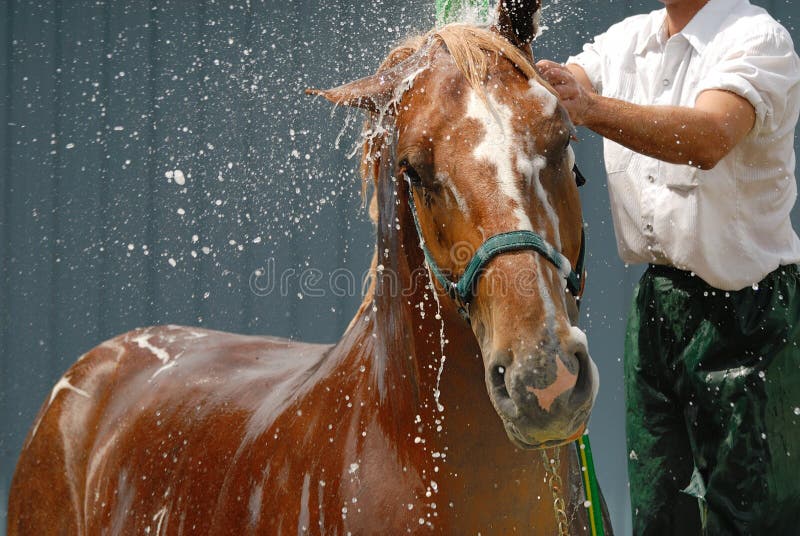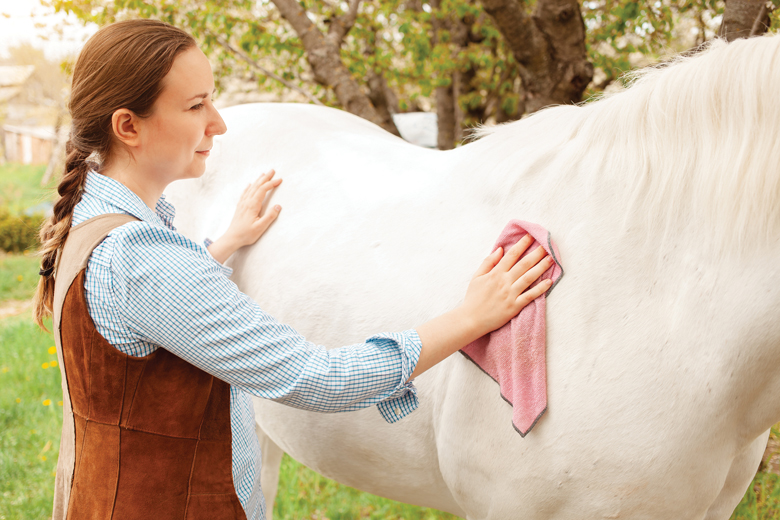Bathing a horse can be a challenging task, especially when the horse in question is nervous or anxious. The process requires patience, understanding, and a gentle approach. In this guide, we will explore how to bathe a nervous horse safely, ensuring both you and your horse have a positive experience. Horses are sensitive creatures, and understanding their behavior is crucial in managing their anxiety during bath time.

Understanding Your Horse’s Anxiety
Before you begin, it’s important to understand why your horse might be nervous. Horses are prey animals, and as such, they are naturally cautious. Factors such as past negative experiences, unfamiliar environments, or even the sensation of water can contribute to their anxiety. Taking the time to observe and understand your horse’s behavior can help you tailor your approach to meet their needs.
Recognizing Signs of Anxiety
Recognizing the signs of anxiety in your horse is the first step in addressing their nervousness. Signs may include pacing, sweating, wide eyes, and a raised head. By identifying these signs early, you can take steps to calm your horse before proceeding with the bath.
Preparing for the Bath
Gathering Supplies
Before you start bathing your horse, ensure you have all necessary supplies on hand. This includes a bucket, sponge, gentle horse shampoo, a hose with a gentle spray nozzle, and a sweat scraper. Having everything ready will help the process go smoothly and reduce stress for both you and your horse.
Choosing the Right Location
The location where you choose to bathe your horse can significantly impact their comfort level. Opt for a quiet, familiar space with non-slip flooring. This will help your horse feel more secure and reduce the risk of slipping or injury.
Step-by-Step Guide to Bathing a Nervous Horse
Introducing the Water
Start by slowly introducing your horse to the water. Use a gentle spray and begin by wetting their legs first. This gradual approach allows your horse to acclimate to the sensation and sound of the water.
Applying Shampoo
Once your horse is comfortable with the water, apply a small amount of gentle horse shampoo to a sponge. Begin by washing their body in sections, starting with the neck and working your way down to their legs. Be sure to rinse thoroughly, as leftover shampoo can irritate your horse’s skin.
Rinsing and Drying
After shampooing, rinse your horse thoroughly with clean water. Use a sweat scraper to remove excess water from their coat, and allow them to dry naturally. You can use a towel to speed up the drying process if your horse is comfortable with it.
Calming Techniques
Using Positive Reinforcement
Positive reinforcement is a powerful tool in building your horse’s confidence during bath time. Reward your horse with treats and praise for calm behavior. This encourages them to associate the bath with positive experiences.
Incorporating Massage
Incorporate gentle massage techniques into your bathing routine. This can help relax your horse and reduce tension. Focus on areas where your horse tends to hold tension, such as the neck and shoulders.
Post-Bath Care
Inspecting for Irritation
After your horse is dry, inspect their skin for any signs of irritation or discomfort. This is especially important if your horse has sensitive skin or allergies. Address any issues promptly to prevent further discomfort.
Maintaining Regular Grooming
Maintaining a regular grooming routine can help reduce the frequency of baths and keep your horse’s coat in excellent condition. Regular brushing helps distribute natural oils and remove dirt, keeping your horse clean and comfortable.
Additional Resources
For more tips on bathing your horse, consider visiting Farnam’s guide on bathing horses. They provide additional insights into the best practices for keeping your horse clean and happy.

FAQs
How often should I bathe my nervous horse?
Bathing frequency depends on your horse’s activity level and environment. Generally, horses do not require frequent baths, but regular grooming can help maintain cleanliness.
What type of shampoo is best for a nervous horse?
Opt for a gentle, hypoallergenic horse shampoo that is free of harsh chemicals. This will help prevent skin irritation and discomfort.
How can I make bath time more enjoyable for my horse?
Creating a calm and positive environment is key. Use positive reinforcement, speak softly, and ensure the water temperature is comfortable for your horse.
This article contains affiliate links. We may earn a commission at no extra cost to you.
